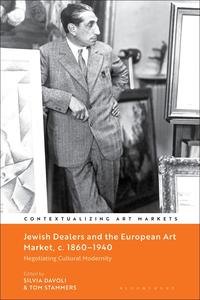Collecting and Material Culture
Led by Silvia Davoli and Tom Stammers
Jewish country houses embodied a certain vision of the world and the place of Jews within it; this vision was expressed through architecture, through interiors and especially through art collections, assembled by Jewish and non-Jewish intermediaries. Differing considerably in scale and style, all these houses articulated notions of civilisation, cultural identity and nationhood through visual and material culture.
In this research strand we explored what these houses revealed about pan-European networks of collectors, antiques dealers and taste-makers. What, if anything, was distinctive about Jewish forms of collecting as expressed in the country house? Which periods and styles did Jewish patrons favour, and in which areas did they innovate? What does the formation of country house collections reveal about how Jews conceived of their relationship to national communities, fabled pasts and the wider history of art?
Starting from these questions, we explored the relationship between Jews and collections in two key areas. In an edited collection with Bloomsbury, we analyse the networks of Jewish art dealers across Europe in the period c.1860-1930. We reflect on how the profession was a motor for social mobility in this period, how it led to the formation of new expertise, and how it gave Jews a visible and contentious place within the cultural sphere. In a second edited volume, with Harvey Miller (Brepols), the different chapters reflect on what different forms of collecting and cultural philanthropy across Europe reveal about Jews’ integration into nation-states, as well as their openness to transnational currents.
We continue to be very interested in exploring Jewish histories and heritage within the museum sector more broadly (as seen through collaborations with the National Gallery and the V&A Museum). In a new research theme we will investigate Jewish engagements with antiquity and antiquities in the nineteenth and early twentieth centuries, bringing together the history of scholarship and the formation of academic disciplines with practices of excavation, collecting and institution-building in a time of intense geopolitical competition.
Featured Publications: Books
With a wide variety of illustrations, including paintings, decorative arts, historic photographs and archival material, the volume adopts a mix of methodological approaches to analyse a key chapter in Jewish cultural history and in the history of the international art market.
Published 23 January 2025
Hardback 336pp
ISBN 9781350473683 Bloomsbury Visual Arts
Edited by Silvia Davoli and Tom Stammers
Forthcoming Harvey Miller/Brepols, 2026
Featured Journal Articles
Journal of the History of Collections, Volume 34, Issue 3, October 2022, Pages 413–426, https://doi.org/10.1093/jhc/fhac005
24 February 2022.
This article reassesses the collecting activities of Herbert Stern (1851–1919), 1st Baron Michelham, and his wife, Geraldine (1882–1927), at the start of the twentieth century, when their lives were lived partly in France and partly in Britain. The first section provides a general overview of the Stern family and their social, cultural and philanthropic activities, which were comparable in scope and range with those of other German–Jewish families established in the United Kingdom at the time. The later sections outline their progressive detachment from this model in favour of a decidedly cosmopolitan direction, a transformation initiated by Lord and Lady Michelham and completed with the assistance of the Jewish art dealer Joseph Duveen.
Journal of the History of Collections, Volume 34, Issue 3, October 2022, Pages 427–440, https://doi.org/10.1093/jhc/fhac006
Published: 04 April 2022
Alfred Mond (1868–1930), 1st Baron Melchett, was a towering figure in early twentieth-century politics and economics, but his significance as an art collector has never been acknowledged. Like his brother, Robert, he has been overshadowed by the stature of his father, Ludwig Mond, with whose collections both were intimately involved. This essay uses the evidence of Alfred Mond’s collections of paintings, sculptures and antiquities to consider his relationship to his German cultural heritage, as well as his evolving understanding of his Jewishness. It seeks to reclaim Mond’s significance as a patron and lover of the arts in both a public and a private capacity.
Edited by Silvia Davoli and Tom Stammers
Journal of the History of Collections, Volume 34, Issue 3, October 2022, Pages 375–386, https://doi.org/10.1093/jhc/fhab059
Published: 02 February 2022
Journal of the History of Collections, Volume 34, Issue 3, October 2022, Pages 507–519, https://doi.org/10.1093/jhc/fhac002



